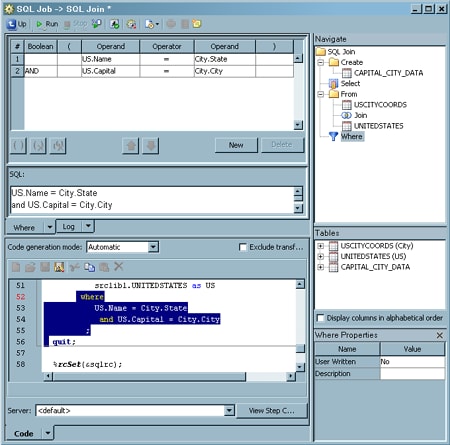Creating or Configuring a WHERE Clause
Tasks
Configure the WHERE Clause with the Where Tab
The WHERE clause for
the query is an SQL expression that creates subsets of the source
tables in the SQL query. It also defines the join criteria for joining
the source tables and the subquery to each other by specifying which
values to match. Perform the following steps to configure the Where tab:
-
If the Where clause object is missing from the process flow in the Diagram tab, double-click Where in the SQL Clauses pane. The Where clause object is added to the query flow in the Diagram tab. Note that Where clause objects are automatically populated into the Diagram tab. The WHERE clause is not automatically generated under the following circumstances:
Note that the SQL code
for the WHERE clause that is shown in the SQL field
is identical to the highlighted WHERE clause code that is displayed
on the Code tab. To highlight the code for
a query object such as the Where object, right-click the object in
the Navigate pane and click Find In. Then,
click Code in the submenu.
Copyright © SAS Institute Inc. All rights reserved.
